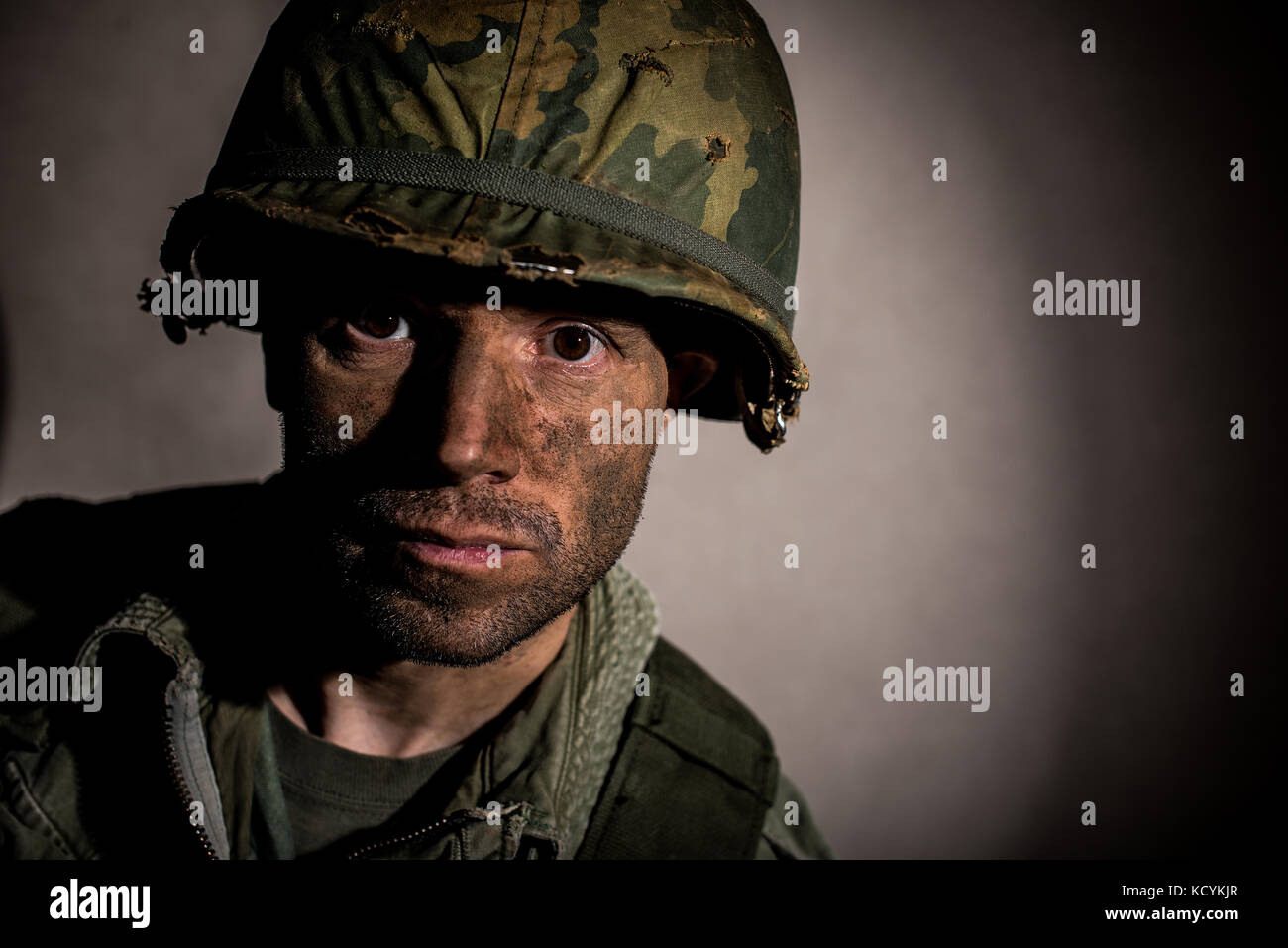Is it possible to truly understand the unseen scars of war, the psychological toll etched onto the faces of those who have witnessed its horrors? The "thousand-yard stare" is more than just a phrase; it's a chilling visual representation of the deep-seated trauma that can linger long after the battles have ceased, a testament to the enduring impact of conflict.
The digital age, with its rapid dissemination of information and the prevalence of visual media, has brought this concept to the forefront. Animated GIFs, memes, and social media content now regularly depict and reference this specific type of expression, attempting to capture the emotional weight of post-traumatic stress disorder (PTSD) and the psychological effects of war. Platforms such as TikTok and the GIF keyboard provider Tenor are instrumental in spreading this content and giving it visibility to wider audience. The proliferation of these images reflects a growing awareness, or perhaps, a morbid fascination, with the mental aftermath of warfare. The search queries "shellshock german thousand yard stare animated gif" exemplify this trend, hinting at a desire to find and share visual representations of this complex emotional state. The use of hashtags like #shellshocked, #memes, #soldier, #war, #trauma, and #lorax further underscores the attempt to contextualize the subject matter within a broader cultural understanding of the psychological wounds inflicted by conflict.
While exploring this content online, you'll often encounter the term "meme generator." These tools, readily available online, provide users with the ability to create and customize images by adding text or other visual elements to pre-existing templates. This process often involves taking existing memes, like those found in collections on sites such as Imgflip, and tailoring them to express a particular sentiment or make a specific point. This widespread use speaks volumes about how people today communicate through images and use them to express themselves, share their stories, and create connections.
The "thousand-yard stare," often depicted in paintings and photographs, transcends its purely visual representation. It's a symbol of the mental and emotional toll of war, a silent testament to the suffering of those who have experienced its horrors. Consider the image of a soldier, helmeted, in front of a smoky mountain, an evocative representation of the environment soldiers are exposed to and what they have to deal with. It evokes a sense of isolation, detachment, and profound sadness an acknowledgement of the trauma experienced by the individual, and serves as an accessible tool for empathy within the user's conversations. Platforms like Know Your Meme provide additional context and analysis, delving into the historical and cultural significance of the image.
The images are often circulated across various social media channels, with communities like the "creepy community," boasting millions of subscribers, showcasing the enduring fascination with such themes. The popularity of animated GIFs of soldiers in various states of distress and reflection are also used, shared, and dissected within these online spaces, reflecting a desire to understand and engage with these issues. As with many aspects of contemporary culture, these images are not only viewed as a way to reflect on the events, they are now an extension of the user's communication.
It's a complex interplay of factors that influence the meaning, and the use, of these images, and the use of them within the internet's current cultural lexicon is indicative of the evolving conversation that's taking place. The question of how accurately these digital artifacts represent the complex and deeply personal experience of war veterans and those struggling with trauma is important. The constant use of these artifacts can often be difficult, especially when discussing something with so much potential for tragedy. The images can sometimes be insensitive or reductive, the potential is always there for a deeper understanding, and they also point to a greater need for empathy and compassion. The use of digital imagery can be powerful, and it is something that is important to bear in mind.


